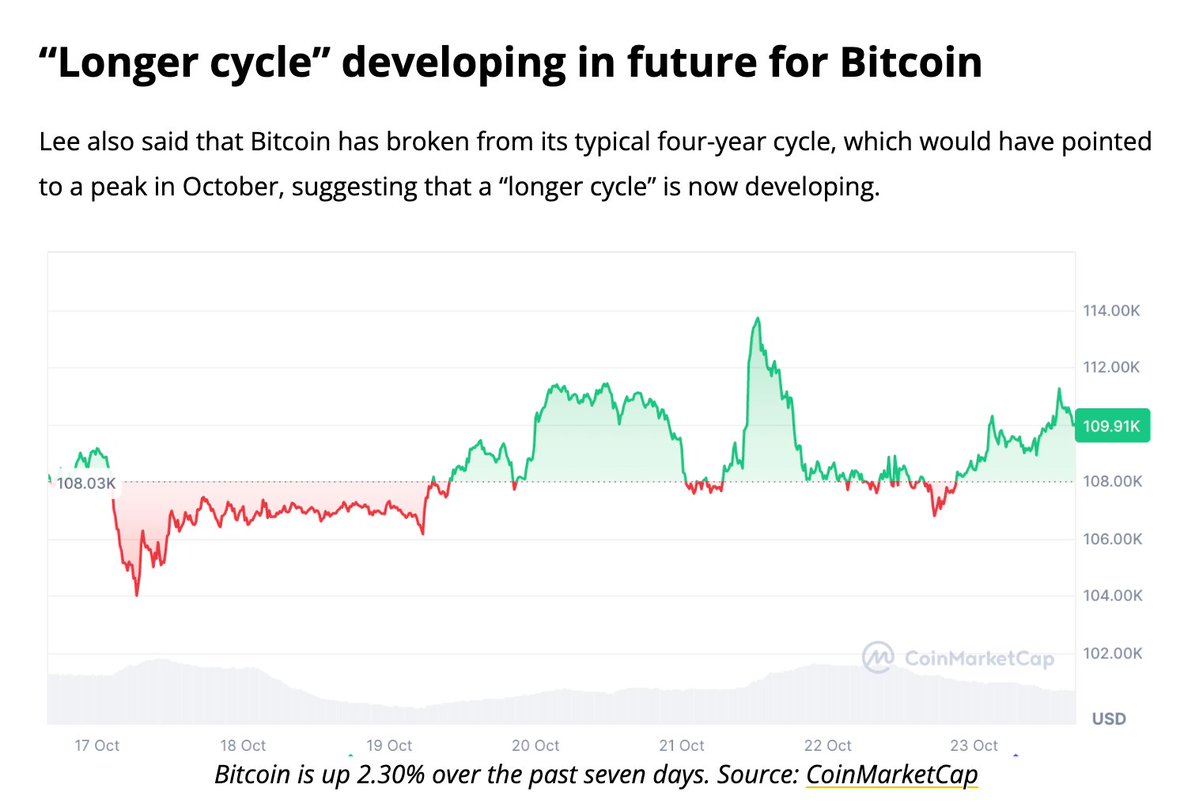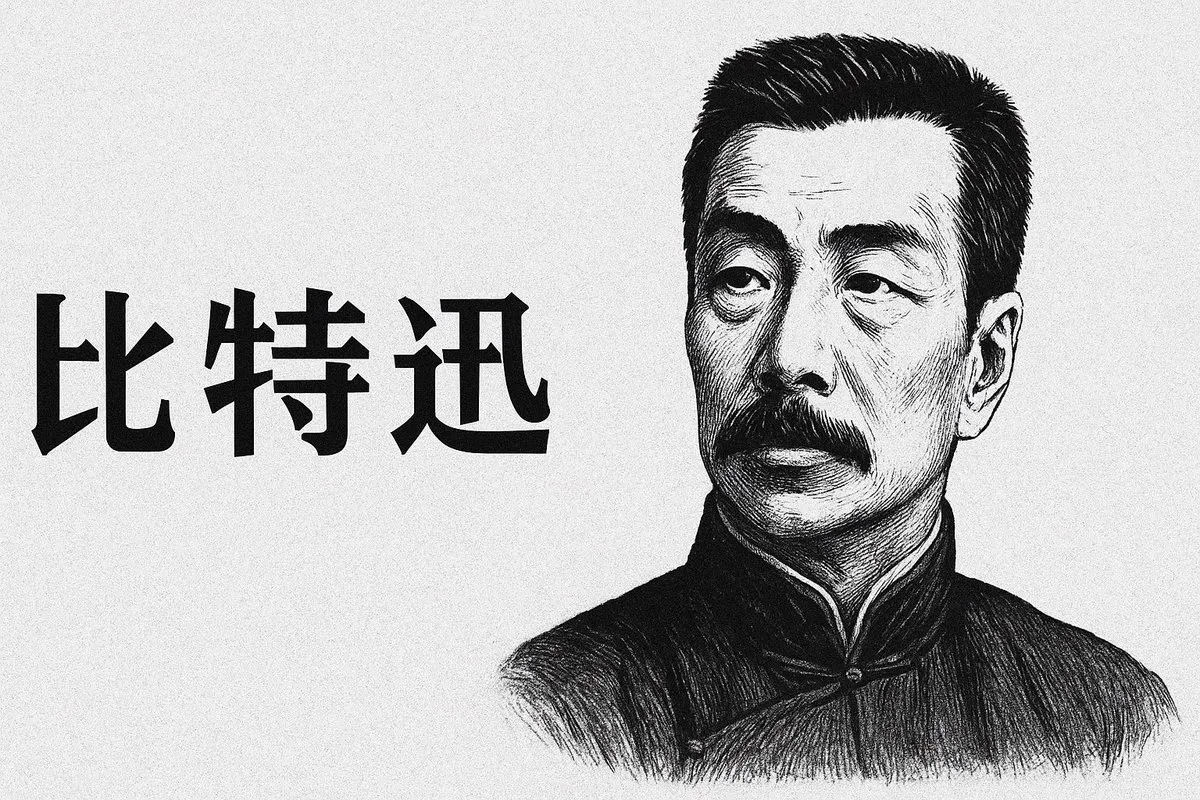🧐 The four-year cycle may have died, but the cycle itself is definitely not dead! Because the "cycle of human nature" has never stopped.
Many people are starting to doubt that a bear market has arrived, believing that the impact of the massive liquidation in October 2021 on the market is irreparable, and that we are about to enter a long bear market again.
Of course, some people still have confidence that we are in a bull market, as according to the four-year cycle, it has not yet completed, and it won't be until 2026 that we can consider the basic model.
So which viewpoint is correct?
Let's put that aside for now!
Tom Lee recently made a rather harsh statement:
"Even if Wall Street falls in love with Bitcoin, it could still drop 50%."
This statement came from his conversation with Pompliano.
Here, we inevitably mention the four-year cycle in the CRYPTO circle again. I maintain my previous viewpoint: the cycle is still there, just not in four years, but in a different form, because human nature is still present; no matter how the market changes, it is driven by human nature!
1️⃣ Our past obsession —
For the past decade, we have been almost conditioned by the "four-year cycle."
2013, 2017, 2021: each round seemed like a pre-written script: halving, skyrocketing, climax, collapse.
People have summarized the so-called rules:
Halving → Supply contraction;
Market sentiment heats up → New funds enter;
Top FOMO → 80% retracement;
Then wait for the next redemption.
This logic is so perfect that it has become a belief. In the past, we were used to: "Halving → Take off."
But note: now, I say now, the market has undergone a qualitative change, especially in this cycle!
The driving force is no longer the belief of retail investors, but liquidity and institutional rhythm.
But does the rhythm of institutions no longer have cycles?
2️⃣ The huge change in this cycle:
In this cycle, we see more ETFs, institutional-led pricing, restructuring of chip structures, and reduced intraday volatility. This judgment is very accurate and aligns with the current reality of ETF + MSTR + macro fund allocation trends.
In simple terms, $BTC is no longer a "retail speculation tool," but an "institutional allocation asset": MicroStrategy, ETFs, and the Wall Street-led capital structure are flattening volatility and extending the cycle.
ETFs, market makers, algorithmic funds, their capital cycles are not four years, but possibly eight years, ten years, or even part of the macro interest rate cycle.
When the capital structure changes, the breathing rhythm of the cycle also changes.
On another level, many people think that "institutionalization" will make volatility disappear,
But the reality is quite the opposite —
Volatility will not disappear; it will just be delayed, amplified, and reconstructed.
ETFs cannot erase greed; they merely wrap greed in a compliant guise.
When BTC is on Wall Street's table, it is no longer a "rebel against the system," but has become part of the system itself.
So Lee says: "I am sure there will still be a 50% retracement in the future." I agree, not because Bitcoin is weakening, but because it has finally become a true asset.
True assets will always have corrections —
Just with different cycles and different costs.
Some say the most special aspect of this cycle is:
"Everyone knows it will have cycles."
Thus, the bubbles are more cautious, greed is more concealed, and faith is more rational.
But the paradox of the market is —
When everyone awakens, the cycle becomes harder to predict.
We may have entered an era of "slow bulls and fast bears,"
An era where volatility is no longer an emotional explosion, but a liquidity pulse.
I feel that: "The cycle has not disappeared; it has just grown."
The past four years was one cycle, but now it may take eight or even ten years;
The past saw sharp rises and falls, but now it may be a long slope with thick snow;
The past was driven by faith, but now it is driven by capital structure.
But the hardest thing to change has never been the market structure, but human hearts.
We are still repeating:
Overestimating ourselves when prices rise, doubting the world when prices fall.
Saylor said: "Winter will not come again."
I am not sure.
Perhaps winter really won't be as cold again,
But human hearts will still freeze between greed and fear.
Finally, I want to say —
The four-year cycle may have died,
But the cycle is definitely not dead!
Because the "cycle of human nature" has never stopped.
Every surge in the market
Reminds us:
The seemingly grand cycle
Is actually just the pulse of collective mentality.
True maturity is not about predicting the next round,
But understanding which round you are in.

免责声明:本文章仅代表作者个人观点,不代表本平台的立场和观点。本文章仅供信息分享,不构成对任何人的任何投资建议。用户与作者之间的任何争议,与本平台无关。如网页中刊载的文章或图片涉及侵权,请提供相关的权利证明和身份证明发送邮件到support@aicoin.com,本平台相关工作人员将会进行核查。




